Archivo de noticias y eventos
551 - 600 de un total de 2398
También puede acceder a la lista de noticias publicadas en los medios relacionadas con el Instituto de Astrofísica de Andalucía - CSIC.
Pages
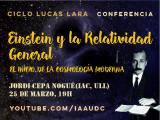
|
25/03/2021 - 19:00
Einstein y la Relatividad General. El inicio de la cosmología moderna La Teoría General de la Relatividad ha representado, junto con la física cuántica, el inicio de la denominada física moderna. Jordi Cepa Nogué |

|
10/06/2021 - 12:30
SO Webloquio: Auroral Radio Emission in stars and exoplanetary systems In recent years, an interesting type of coherent radio emission has been detected in a wide variety of stars across the HR diagram, from hot magnetic A-B MS stars to Ultra Cool dwarfs: the Auroral Radio Emission (ARE), previously observed by spacecrafts in the magnetosphere of planets of the Solar System. Very different objects are showing the same phenomenon. What do they have in common? The first star with ARE was CU Virginis, an early type... Dr. Corrado Trigilio |

|
10/03/2021
Observan por primera vez un chorro de gas mientras emerge de la estrella central de una nebulosa planetaria Gracias al instrumento MEGARA, del Gran Telescopio Canarias, investigadores del Instituto de Astrofísica de Andalucía (IAA-CSIC) han observado y analizado el chorro de NGC 2392, que apunta a la existencia de una estrella compañera |

|
28/04/2021 - 30/04/2021
SO instrumentation school: High level sinthesys for Xilinx FPGAs using Vivado HLS On line |
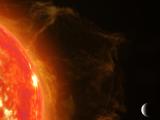
|
04/03/2021
Se halla una supertierra idónea para futuros estudios atmosféricos El Instituto de Astrofísica de Andalucía (IAA-CSIC) participa en el descubrimiento de un planeta en torno a la estrella enana roja Gliese 486, situada a solo 26 años luz de distancia |
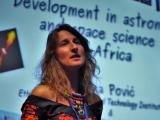
|
02/03/2021
La investigadora Mirjana Povic recibe el premio Jocelyn Bell Burnell de la Sociedad Astronómica Europea Investigadora del Instituto Etíope de Ciencia y Tecnología Espaciales y doctora vinculada al Instituto de Astrofísica de Andalucía, investiga la formación y evolución de las galaxias. Trabaja en el desarrollo de la ciencia y la educación en África, con especial atención en el papel de las mujeres, y ha coordinado y participado en proyectos en Etiopía, Uganda, Ruanda, Tanzania, Sudáfrica, Kenia y Ghana |

|
07/04/2021 - 07/04/2021
Matplotlib for Beginners - A Brief Severo Ochoa Workshop Online |
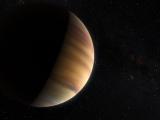
|
23/02/2021
La revolución de los exoplanetas Didier Queloz, premio Nobel de Física 2019 por el hallazgo del primer exoplaneta en torno a una estrella similar al Sol, impartirá un seminario sobre los sistemas planetarios hallados hasta la fecha y sus implicaciones en nuestra visión del universo |

|
17/06/2021 - 12:30
SO Webloquio: Star-formation and accretion in galaxies from near to far: the LeMMINGs and eMERGE e-MERLIN legacy programmes Radio emission provides a uniquely powerful and unobscured probe of the two key physical processes underway in, and powering, galaxies and their evolution: Accretion on to their central SMBH, and star-formation processes. To explore these processes, and their role in galaxy evolution, we require very high resolution (sub-arcsecond or better), sensitive imaging at radio wavelengths across large samples of galaxies in both the local and distant... Dr. Rob Beswick |

|
27/04/2021 - 12:30
SO Webloquio: Chaos and Instabilities in Planetary Systems The aim of this talk is to discuss recent results on the estimation of instability times through Shannon entropy and its application to planetary systems. We will analyze the complex relation between chaos and orbital instability, and how each is able to provide important information about the dynamical evolution of the system. Finally, we will analyze how different well known planetary systems These concepts will then be applied to several... Dr Cristian Beauge |

|
06/04/2021 - 13:30
SO Webloquio: James Webb Space Telescope Capabilities for Planet and Exoplanet Observations JWST, scheduled for launch in October, will bring a new generation of instruments, infrared detectors, and a passively cooled 6.5 m primary mirror to space-based astronomy. I will discuss its imaging and spectroscopic modes, which cover wavelengths from 0.6 - 28.5 microns, and the observatory's moving-target tracking, and coronagraphic and time-series modes for direct or transit observations of exoplanets. I will show some statistics for the... Dr. John Stansberry |

|
24/06/2021 - 12:30
SO Webloquio: Asteroid sample return: A laboratory perspective The new generation of sample return missions from small bodies is delivering to us fresh witnesses from the early Solar System. In this context, laboratory studies play a double role: on one hand, in-depth laboratory analysis of retrieved samples using state-of-the-art techniques give us an unprecedentedly detailed look at the formation and evolution of organic materials in asteroids; on the other hand, in the laboratory we can perform... Dr. Rosario Brunetto |

|
09/09/2021 - 17:00
SO Webloquio: A new look at our star: the Daniel K. Inouye Solar Telescope The Sun represents a template for much of our understanding of the workings of a "cool" star, and its proximity allows us to observe exquisite details at its surface, with current facilities routinely reaching resolutions of few hundreds of km on the solar disk. Yet, many questions still linger, in particular concerning the actual mechanism(s) that create and maintain a hot outer atmosphere (chromosphere, transition region and corona) as well as... Dr. Gianna Cauzzi |

|
27/05/2021 - 17:00
SO Webloquio: A Spanish in Boulder The opportunity to lead the US National Solar Observatory (managed by AURA) since 2013 has allowed me to understand the differences in how R... Dr. Valentin Martínez Pillet |

|
20/05/2021 - 12:30
SO WebLoquio: Regularly-spaced 8 micron cores as tracers of the earliest stages of star formation in the spiral arms of nearby galaxies Archival Spitzer Space Telescope images of most nearby spiral galaxies show prominent 8 micron emission cores when viewed with an unsharp mask technique. These cores have the IR colors of young star-forming regions, typically a million years old, behind several tens of magnitudes of optical extinction. They are usually invisible in optical images, and yet the sum of their masses divided by their likely age is comparable to the total star... Dr. Bruce Elmegreen |

|
13/05/2021 - 12:30
SO Webloquio: The HIRES/ELT consortium, instrument and science We present the results from the phase A study of ELT-HIRES, an optical-infrared, high-resolution spectrograph for ELT, which has just been completed by a consortium of 30 institutes from 12 countries forming a team of about 200 scientists and engineers. The top science cases of ELT-HIRES will be the detection of life signatures from exoplanet atmospheres, tests on the stability of Nature's fundamental couplings, the direct detection of the... Dr. Alessandro Marconi |

|
06/05/2021 - 12:30
SO Webloquio: Nuclear star clusters I review the current knowledge about nuclear star clusters (NSCs), and the spectacularly dense and massive assemblies of stars found at the centers of most galaxies. Understanding the formation, growth, and ultimate fate of NSCs is crucial for a complete picture of galaxy evolution. There is a clear transition mass in galaxies of ∼ 10^9 Msol where the characteristics of NSCs change. I argue that at lower masses, NSCs are formed primarily from... Dr. Nadine Neumayer |

|
30/03/2021 - 12:30
SO Webloquio: Star-forming Complexes in Local Mergers and High Redshift Galaxies Disk galaxies at high redshift contain star-forming complexes, or clumps, whose masses and sizes far exceed those of clumps in local non-interacting galaxies. However, our recent Hubble Space Telescope observations reveal that local merging galaxies can form massive clumps like those at high z, with the same range of physical size, surface density, age, and star formation rate. These similarities, combined with the loss at high redshift of low... Dr. Debra Elmegreen |
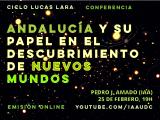
|
25/02/2021 - 19:00
Andalucía y su papel en el descubrimiento de nuevos mundos En veinticinco años hemos pasado de pensar que nuestro Sistema Solar era único en la Galaxia a conocer que hay miles de planetas ya detectados y que podría haber miles de millones ahí fuera Pedro J. Amado |

|
19/04/2021 - 23/04/2021
SOMACHINE 2 Machine Learning, Big Data, and Deep Learning in Astronomy On line |

|
15/02/2021
La Escuela Avanzada de Sistemas Planetarios del IAA, publicada en abierto Organizada en el marco del proyecto Severo Ochoa-IAA, aborda desde un contexto amplio y actualizado nuestro conocimiento sobre los sistemas exoplanetarios |
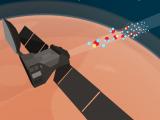
|
10/02/2021
La misión ExoMars descubre un nuevo gas y rastrea la pérdida de agua en Marte El orbitador ExoMars-TGO, de la Agencia Espacial Europea y Roscosmos, halla cloruro de hidrógeno en la atmósfera marciana, producida por la liberación de la sal incrustada en la superficie del planeta. Los datos de ExoMars permiten también cuantificar la pérdida de agua en el planeta rojo y establecer los mecanismos que contribuyen al proceso |

|
09/02/2021
Día Internacional de la Mujer y la Niña en la Ciencia El Instituto de Astrofísica de Andalucía se suma a la celebración del Día Internacional de la Mujer y la Niña en la Ciencia, que busca visibilizar la labor científica de las mujeres y fomentar las vocaciones en las niñas |

|
29/04/2021 - 12:30
Extreme Blazars Blazars are jetted active Galactic Nuclei with the jet axis oriented close to the line of sight of the observer. Non-thermal emission processes in the jet cover the whole electromagnetic spectrum from radio wavelengths to TeV gamma rays, with a characteristic double-humped Spectral Energy Distribution (SED). Relativistic amplification effects on the observed fluxes make their jets ideal candidates for detection at any wavelength. A physically... Dr. Giacomo Bonnoli |

|
08/04/2021 - 12:30
On the effects of Initial Mass function on the galactic chemical enrichment: the role of Pair Instability Supernovae We built new sets of chemical yields from massive and very massive stars up to Mi ~ 350 Msun, by combining the wind ejecta extracted from our hydrostatic stellar evolution models with explosion ejecta from the literature. Using a simple chemical evolution code we analyse the effects of adopting different yield tables by comparing predictions against observations of stars in the solar vicinity. Our study indicates that PISN played a significant... Dr. Sabyasachi Goswami |
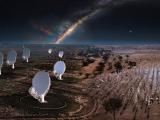
|
04/02/2021
Nace SKAO, el mayor observatorio de radioastronomía del mundo España se encuentra entre los países participantes en el Observatorio SKA (SKAO), una organización intergubernamental que abrirá una nueva era en la radioastronomía. El Ministro de Ciencia, Pedro Duque, ha resaltado que se trata de un hito que revolucionará la astronomía y otros campos científicos y tecnológicos. La participación española en SKA está liderada por el Instituto de Astrofísica de Andalucía (IAA-CSIC) |
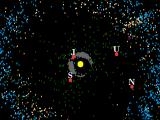
|
03/02/2021
Un vistazo con “lupa” a uno de los mayores centauros conocidos Gracias a una ocultación estelar logran observar y determinar las características de 2002 GZ32, un centauro de casi 400 kilómetros de diámetro en su eje mayor. Conocidos desde hace más de cuarenta años, apenas disponemos de información sobre este grupo de objetos helados que giran alrededor del Sol entre las órbitas de Júpiter y Neptuno |

|
22/04/2021 - 12:30
Gas-poor clusters: what kind of beasts are they? The known variety of galaxy clusters is constantly increasing with our progress in understanding the severity of selection effects on observational samples and with obvious implications on cosmology and cluster physics. In the talk, after a general introduction on galaxy clusters and a reminder on selection effects, I present perhaps the first X-ray unbiased sample of clusters with known masses and X-ray follow-up, its more variegate nature... Dr. Stefano Andreon |

|
20/01/2021 - 20/01/2021
El cielo oscuro como recurso científico, cultural, medioambiental y turístico Sevilla, Virtual Format |

|
20/02/2019 - 22/02/2019
Ciencia presente y futura con CARMENES & 1er encuentro EXONET Granada |

|
26/02/2019 - 27/02/2019
PLATO Limb-Darkening Meeting #1 Granada |
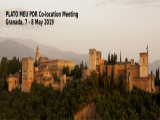
|
07/05/2019 - 08/05/2019
PLATO MEU PDR Co-location Meeting Granada |
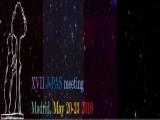
|
20/05/2019 - 23/05/2019
17th J-PAS Collaboration Meeting Madrid |
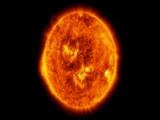
|
18/09/2019 - 19/09/2019
SOLARIS-HEPPA Working Group meeting Granada |

|
30/09/2019 - 04/10/2019
6th Workshop on Robotic Autonomous Observatories Torremolinos |
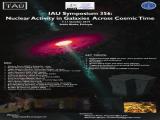
|
07/10/2019 - 10/10/2019
IAU Symposium 356: "Nuclear Activity in Galaxies Across Cosmic Times" Addis Abeba |

|
02/12/2019 - 04/12/2019
The Universe in 56 colors. Science with the first J-PAS data Teruel |

|
12/03/2020 - 13/03/2020
Public surveys and new instrumentation for Calar Alto Observatory Granada - Virtual Format |

|
11/03/2021 - 12:30
Optical polarization of radio-quiet active galactic nuclei and its repercussion within the changing-look scenario The core of Active Galactic Nuclei (AGN) remains under the resolution limit of the vast majority of current telescopes. However, polarimetry provide us with information of those unresolved regions, which would be inaccessible in natural light, such as the presence of dust, magnetic fields or scattering regions. This talk will be focused on the optical polarization properties of radio-quiet AGN and its relation with the geometry of the scattering... Dr. Beatriz Agis González |

|
19/01/2021
El IAA desarrolla un estudio que muestra un descenso de la contaminación lumínica en Granada durante el confinamiento Aunque se han desarrollado estudios similares en otros países, este es el único que ha obtenido resultados gracias a la combinación de observaciones desde satélite y desde tierra |

|
15/04/2021 - 12:30
Unveiling the low surface brightness Universe From the beginning of time, humankind has wondered what lies behind the darkness of the night sky. From the pre-telescope era to the present, our ability to see the lowest surface brightness details in the sky has improved by a factor of one million. In this talk, I describe how our vision of the sky has changed over time and how the recent developments in ultra deep imaging have speed up our capacity to discover new objects and structures in... Dr. Ignacio Trujillo |
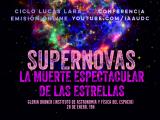
|
28/01/2021 - 19:00
Supernovas: la muerte espectacular de las estrellas Una estrella que se apaga en el universo terminando su vida como supernova es fuente de todo menos de oscuridad. Gloria Dubner |

|
13/01/2021
Una campaña de divulgación científica acerca a Granada la belleza del Sistema Solar Durante el mes de enero, las calles de centro de la ciudad y las marquesinas del Metropolitano mostrarán los objetos del Sistema Solar y la investigación que desde Granada se hace acerca de ellos. La iniciativa ha sido desarrollada por el Instituto de Astrofísica de Andalucía con la colaboración del Ayuntamiento de Granada y la Junta de Andalucía y con la financiación del Ministerio de Ciencia e Innovación |

|
04/03/2021 - 12:30
SO Webloquio: Multiple stellar populations in globular clusters: Properties, origin, open questions Globular clusters (GCs) are fascinating objects nearly as old as the Universe that provide insight on a large variety of astrophysical and cosmological processes. However, their formation and their early dynamical evolution are far from being understood. In particular, the classical paradigm describing GCs as large systems of coeval stars formed out of chemically homogeneous material has been definitively swept away by recent high-precision... Dr. Corinne Charbonnel |
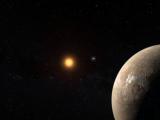
|
14/01/2021
Un estudio en radio de Próxima Centauri, el sistema planetario más cercano, abre una nueva vía para el estudio de los exoplanetas Investigadores del Instituto de Astrofísica de Andalucía (IAA-CSIC) encabezan un ambicioso proyecto de observación en radio que muestra que los planetas extrasolares pueden detectarse con radiotelescopios |
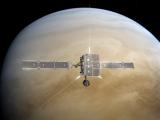
|
27/12/2020
La misión Solar Orbiter sobrevuela Venus por primera vez Este sobrevuelo, el primero de muchos, tiene como objetivo acercar la nave a su órbita solar e inclinar su órbita para observar el Sol desde diferentes perspectivas |

|
18/12/2020 - 12:30
SO Webloquia: ESO: supporting European leadership in ground-based astronomy ESO is de facto the lead world-wide organisation in building and operating most powerful ground-based astronomical observatories. The success of the organisation relies on the support of its member states and the cooperation with the community, among other key factors. Over 1000 refereed papers are published every year using data from ESO facilities, with an increasingly larger fraction of these data coming from the archive. Among these... Prof. Xavier Barcons |
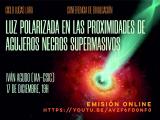
|
17/12/2020 - 19:00
Luz polarizada en las proximidades de agujeros negros supermasivos Los jets relativistas producidos por agujeros negros supermasivos son los objetos astrofísicos más energéticos que se conocen y pueden observarse hasta distancias enormes y edades muy tempranas del universo. Esta conferencia se centrará de estos objetos, y más concretamente en sus características principales y la información extra que aporta estudiar la luz polarizada que emiten, así como los principales interrogantes que aún quedan por resolver... Iván Agudo |
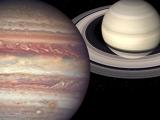
|
11/12/2020
Triple conjunción planetaria: una oportunidad idónea para disfrutar del cielo nocturno Este mes de diciembre, debido a la alineación de la Tierra, Júpiter y Saturno, podremos ver a los planetas gigantes del Sistema Solar muy próximos en el cielo. Se están organizando numerosas actividades para disfrutar del evento |

|
10/12/2020
RoadMap: estudiando el omnipresente pero aún desconocido polvo marciano Enmarcado en el programa europeo Horizonte 2020, acaba de comenzar el proyecto RoadMap (acrónimo en inglés de “Papel e impacto del polvo y las nubes en la atmósfera marciana”) |